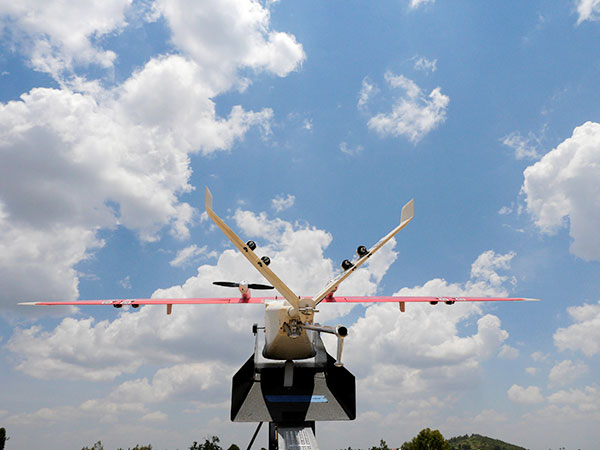Dog fight: Start-ups take aim at errant drones
 |
|
A drone is placed on a launch pad at operations center in Muhanda, south of Rwanda's capital Kigali where Zipline, a California-based robotics company delivered their first blood to patients using a drone October 12, 2016. Picture taken October 12, 2016. [Photo/Agencies] |
A boom in consumer drone sales has spawned a counter-industry of start-ups aiming to stop drones flying where they shouldn't, by disabling them or knocking them out of the sky.
Dozens of start-up firms are developing techniques - from deploying birds of prey to firing gas through a bazooka - to take on unmanned aerial vehicles (UAVs) that are being used to smuggle drugs, drop bombs, spy on enemy lines or buzz public spaces.
The arms race is fed in part by the slow pace of government regulation for drones.
In Australia, for example, different agencies regulate drones and counter-drone technologies. "There are potential privacy issues in operating remotely piloted aircraft, but the Civil Aviation Safety Authority's role is restricted to safety. Privacy is not in our remit," said the CASA.
"There's a bit of a fear factor here," says Kyle Landry, an analyst at Lux Research. "The high volume of drones, plus regulations that can't quite keep pace, equals a need for personal counter-drone technology."
The consumer drone market is expected to be worth $5 billion by 2021, according to market researcher Tractica, with the average drone in the United States costing more than $500 and packing a range of features from high-definition cameras to built-in GPS, predicts NPD Group, a consultancy.
Australian authorities relaxed drone regulations in September, allowing anyone to fly drones weighing up to 2kg without training, insurance, registration or certification.
Elsewhere, millions of consumers can fly high-end devices - and so can drug traffickers, criminal gangs and insurgents.
Drones have been used to smuggle mobile phones, drugs and weapons into prisons, in one case triggering a riot. One US prison governor has converted a bookshelf into an impromptu display of drones his officers have confiscated.
Armed groups in Iraq, Ukraine, Syria and Turkey are increasingly using off-the-shelf drones for reconnaissance or as improvised explosive devices, says Nic Jenzen-Jones, director of Armament Research Services, a consultancy on weapons.
A booby-trapped drone launched by Islamic State militants killed two Kurdish Peshmerga fighters and wounded two French soldiers in October near Mosul.
The use of drones by such groups is likely to spread, says Jenzen-Jones. "There's an understanding that the threat can migrate beyond existing conflict zones," he said.
















